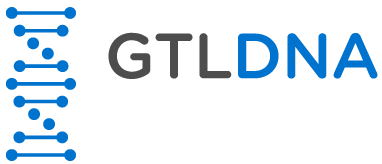The DNA testing laboratory has the National Association of Testing Authorities (NATA) accreditation which has the most rigorous quality procedures in place internationally. Some definitions of the various accreditations held by the testing laboratory:
ISO 17025
ISO 17025 is the global standard for the technical competence of calibration and testing laboratories. A laboratory accredited to ISO 17025:2005, will have incorporated an overall system for technical and quality management. This results in superior laboratory practices and customer service. We have since inception always operated with ISO17025 accredited laboratories.
NATA
The National Association of Testing Authorities (NATA) accreditation provides a means of determining, recognising and promoting the competence of facilities to perform specific types of testing and provides formal recognition to competent testing facilities, thus providing a ready means for customers to identify and select reliable testing services. To maintain this recognition, laboratories are re-evaluated periodically by NATA to ensure their continued compliance with requirements and to check that their standard of operation is being maintained. The laboratory is also required to participate in relevant proficiency testing programs between reassessments, as a further demonstration of technical competence. NATA is the most difficult Accreditation for a Parentage Testing Laboratory to attain due to its rigorous quality and security requirements.
Ministry of Justice (MOJ)
The MOJ is a ministerial department that works to protect the public and reduce reoffending while providing a more effective, transparent and responsive criminal justice system for victims and the public within the UK.
The testing laboratory is a body that has been accredited by the Ministry of Justice as a body that may carry out parentage tests directed by the civil courts in England and Wales under section 20 of the Family Law Reform Act 1969.
ILAC-MRA
The International Laboratory Accreditation Cooperation (ILAC) first started as a conference in 1977 with the aim of developing international cooperation for facilitating trade by promotion of the acceptance of accredited test and calibration results. In 1996, ILAC became a formal cooperation with a charter to establish a network of mutual recognition agreements among accreditation bodies that would fulfill this aim. The ILAC Mutual Recognition Arrangement (often referred to as the ILAC Arrangement) is the culmination of 22 years of intensive work.
The arrangement came into effect on 31 January 2001. The ILAC Arrangement provides significant technical underpinning to international trade. The key to the Arrangement is the developing global network of accredited testing and calibration laboratories that are assessed and recognized as being competent by ILAC Arrangement signatory accreditation bodies. The signatories have, in turn, been peer-reviewed and shown to meet ILAC’s criteria for competence. Now that the ILAC Arrangement is in place, governments can take advantage of it to further develop or enhance trade agreements. The ultimate aim is increased use and acceptance by industry as well as government of the results from accredited laboratories, including results from laboratories in other countries. In this way, the free-trade goal of “a product tested once and accepted everywhere” can be realized.
